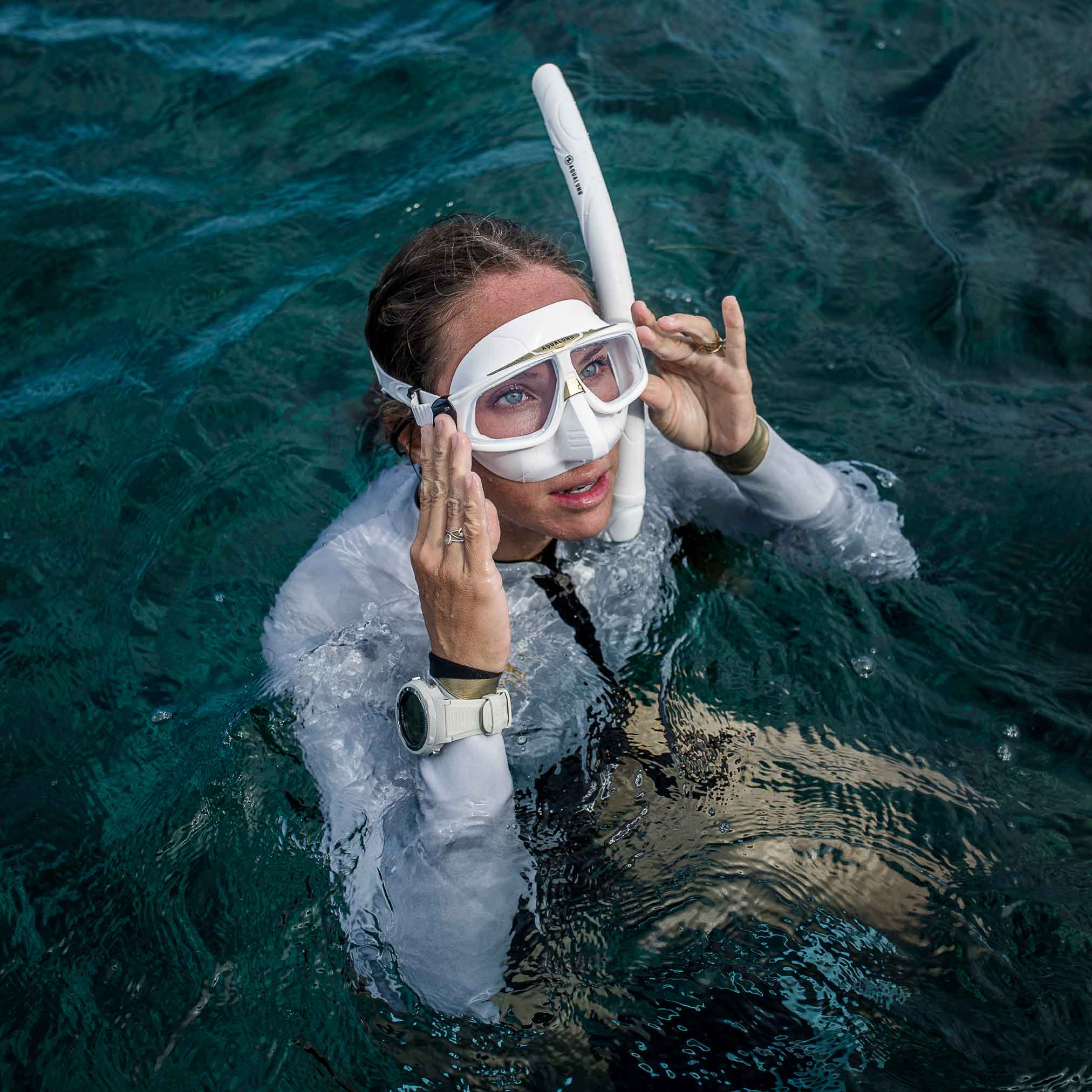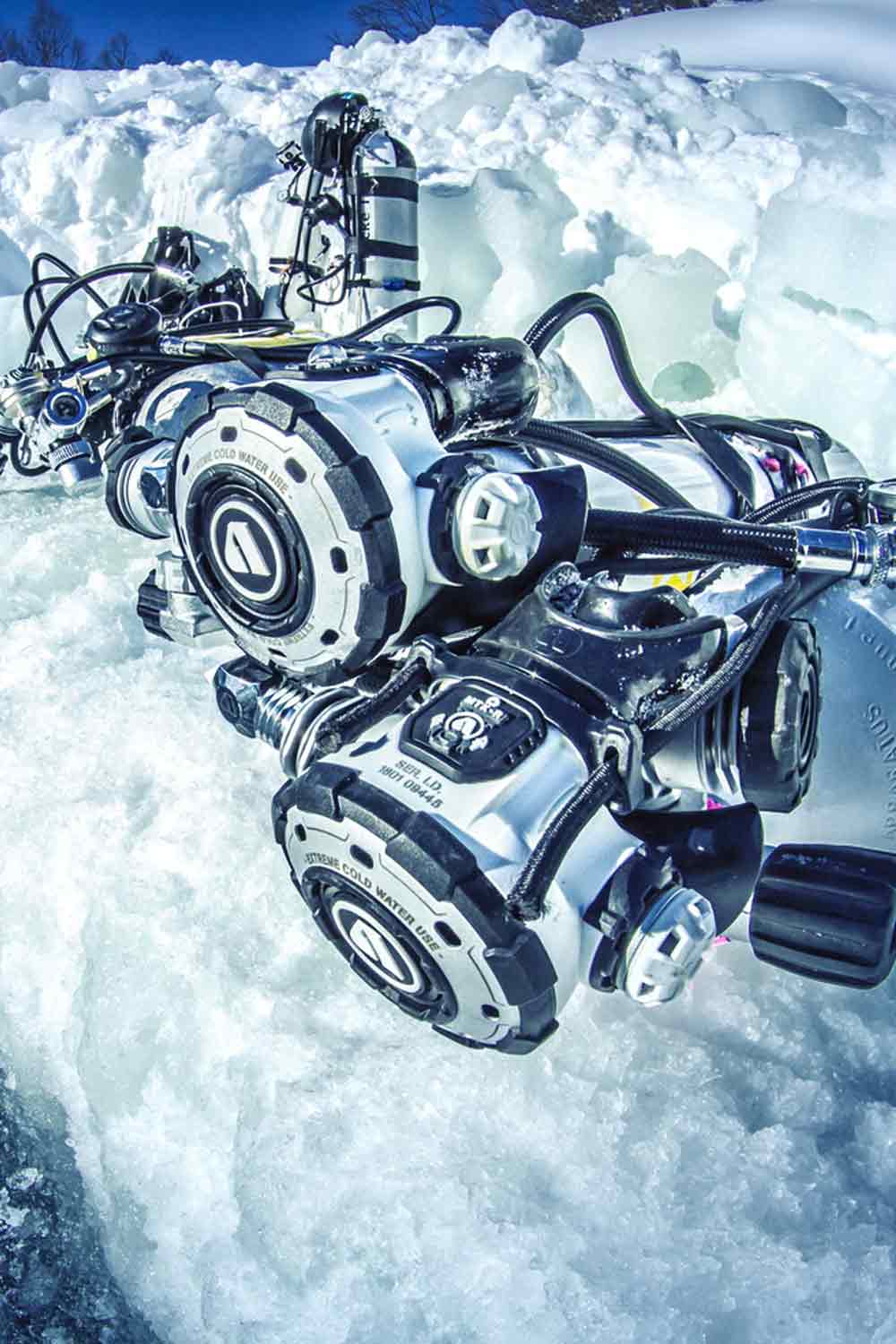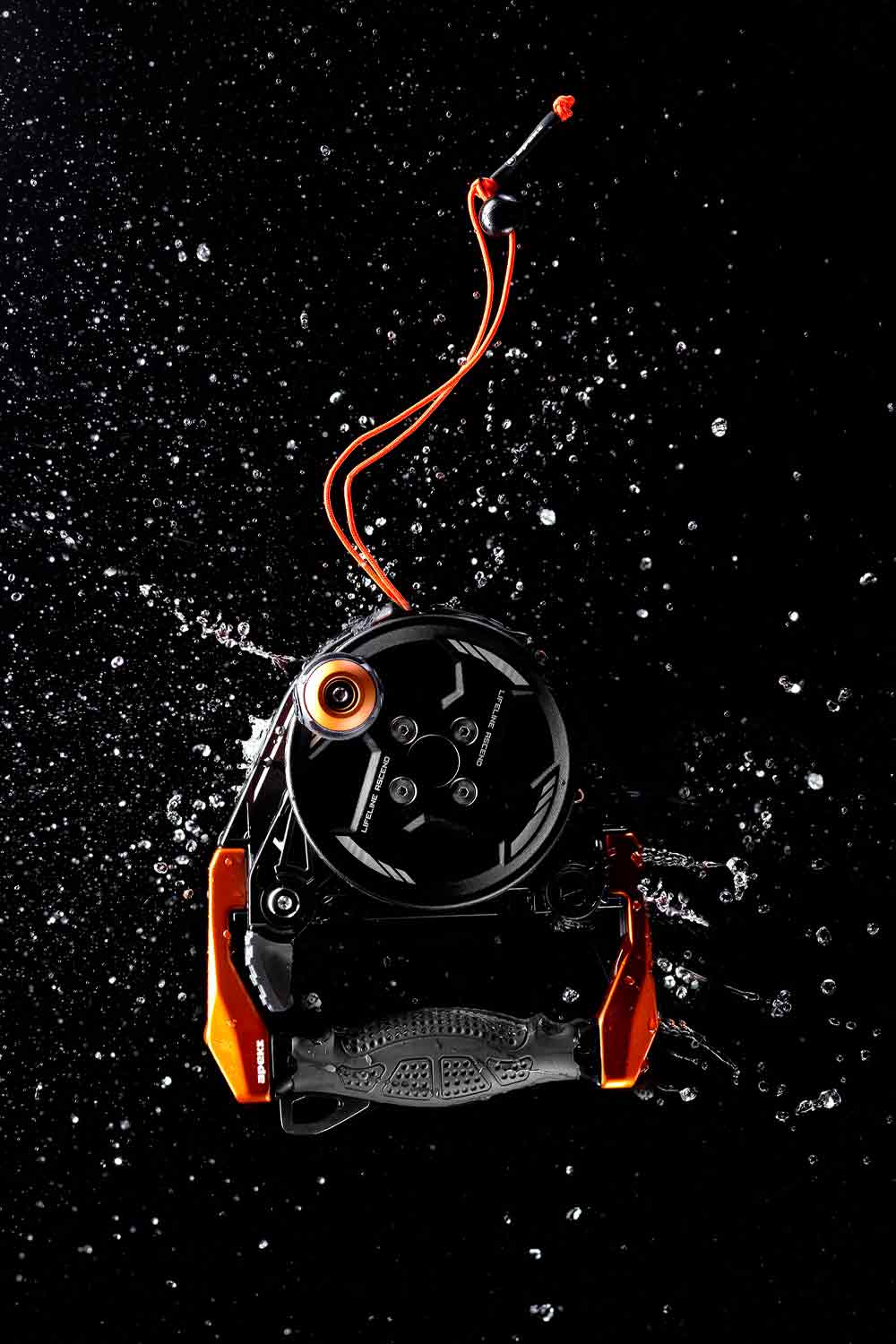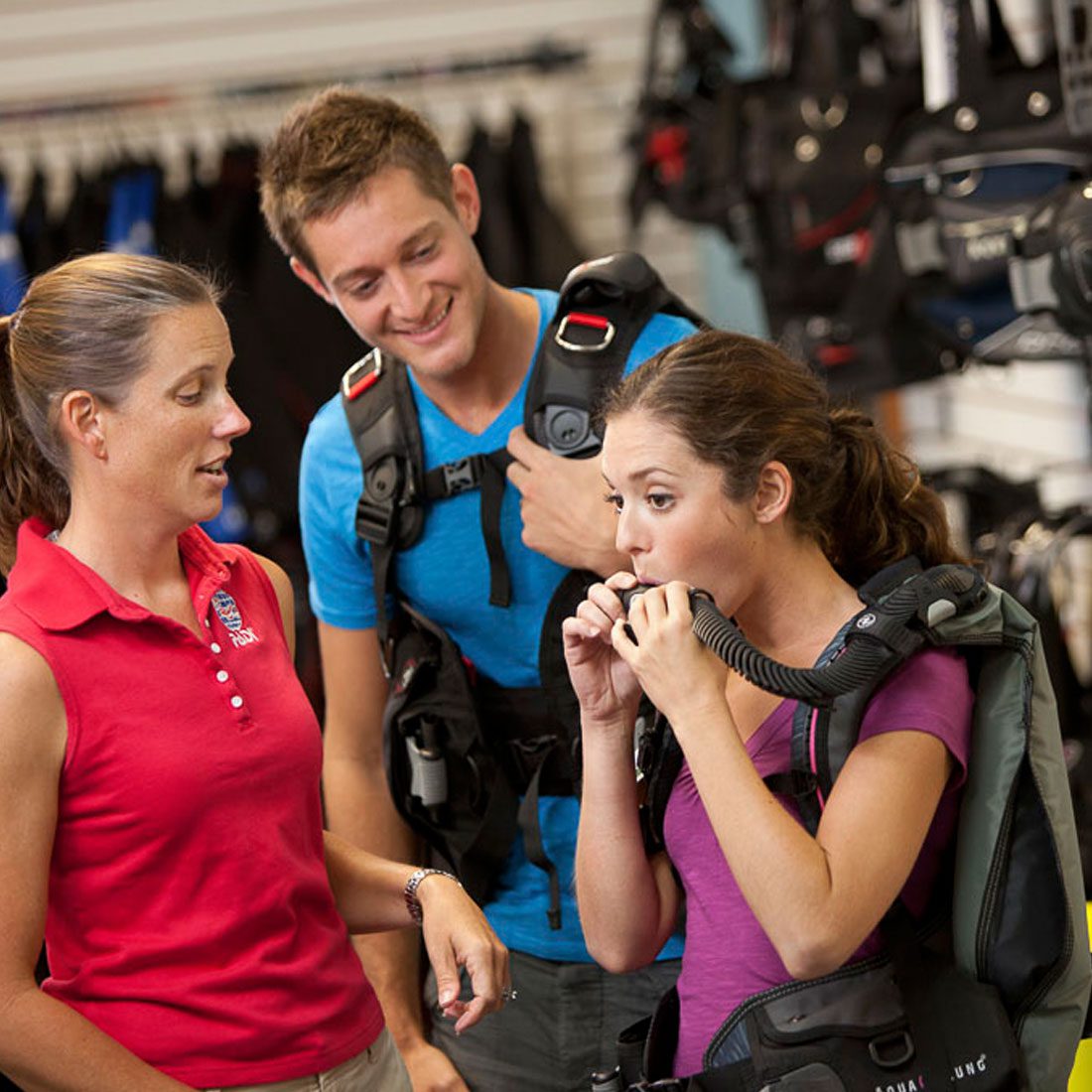Diving Knowledge, PADI
Scuba Diving Dictionary
Here you will find all the definitions for the scuba diving terms that we use.
Absolute Pressure
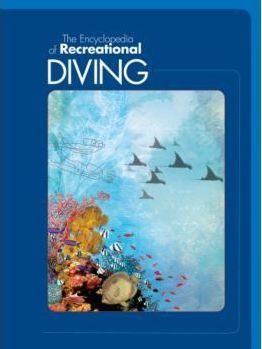
it is calculated by using a vacuum as the zero point and including the gauge and atmospheric pressure in the calculation.
Adrenaline
A hormone secreted by the adrenal gland into the circulatory system which stimulates the heart, blood vessels and respiratory system.
Air
A gas mixture containing 21% oxygen, 78% nitrogen, and 1% other gasses (mainly argon); compressed air is used for recreational scuba diving.
Air Compressor
A machine that compresses or pressurizes air; for scuba purposes, the air is compressed from the atmospheric level (1 ATA at sea level) to the capacity of the tank, usually between 200-300 Bar.
Air Embolism
A condition that occurs when air enters the bloodstream through ruptured alveoli into the pulmonary capillaries. The air in the bloodstream then forms bubbles, which can block blood flow to the body’s tissues.
Air Pressure
The force per unit area exerted by the weight of air; at sea level, the air pressure is 1 atmosphere absolute. (air pressure decreases with altitude.)
Algorithm
A set of equations incorporated into diving computers in order to compute nitrogen uptake and elimination from changes in depth and elapsed time.
Alternate Air Source
A device a diver can use in place of the primary regulator, to make an ascent while still breathing normally.
Ambient Pressure
The surrounding pressure; on land, comes from the weight of the atmosphere(see air pressure), at depth, comes from the weight of the water plus the weight of the atmosphere.
Analogue
Instrument Device that uses a needle moving around a dial to provide information.
Archimedes Principle
Any object wholly or partly immersed in a fluid will be buoyed up by force equal to the weight of the fluid displaced by the object. Argon An inert gas that makes up less than one percent of air (and is sometimes used as a dry suit gas).
Arterial Gas Embolism (AGE)
The condition characterized by bubbles of air from a ruptured lung segment under pressure; the bubbles enter the pulmonary circulation and travel to the arterial circulation, where they may cause a stroke.
Ascent/Decent Line
Line suspended from a boat or a buoy for a diver to use to control their rate of ascent or descent.
Asthma
A common condition manifested by narrowing of air passages within the lungs. One reason for the narrowing is excess mucous in the airway.
ATA
Atmosphere absolute; 1 ata is the atmospheric pressure at sea level; is measured with a barometer.
Atmosphere
The blanket of air surrounding the earth, from sea level to outer space. Also, a unit of pressure; “one atmosphere is the pressure of the atmosphere at sea level, I.e., 760 mm Hg. Two atmospheres is twice this pressure, 1520 mm Hg, etc. Abbreviated atm.
Atmospheric Pressure
The pressure of the atmosphere at a given altitude or location.
B
BAR
Approximately equal to 1 atmosphere. A common measurement of air pressure.
Barometric Pressure
Same as atmospheric pressure with the exception that it varies with the weather.
Barotraumas
Any disease or injury due to unequal pressures between a space inside the body and the ambient pressure, or between two spaces within the body; examples include arterial gas embolism and pneumothorax.
BC or BCD
See buoyancy compensator.
Bends
A form of decompression sickness caused by dissolved nitrogen leaving the tissues too quickly on the ascent; is a manifestation of decompression sickness. Body Suit Garment that provides full-length abrasion protection.
Bottom Time
The time between descending below the surface to the beginning of the ascent.
Boyle’s Law
At a fixed temperature for a fixed mass of gas, pressure times volume is a constant value.
Breath-hold Diving
Diving without life support apparatus, while holding one’s breath.
Bubble
A collection of air or gas surrounded by a permeable membrane through which gases can enter or exit.
Buoyancy
The upward force exerted on an object in liquid, whether the object sinks or floats. Objects that float are positively buoyant, those that sink are negatively buoyant, and those that stay where placed are neutrally buoyant.
Buoyancy Compensator
An inflatable vest is worn by the diver that can be automatically or orally inflated to help control buoyancy; abbreviated BC or BCD (Buoyancy Control Device).
Burst Disk
Thin copper disk held in place with a vented plug. Designed to rupture if tank pressure is greatly exceeded.
C
Capillary Depth Gauge
Made up of a small tube. Uses Boyle’s law to determine depth.
Carbon Dioxide CO2
Is an odourless, tasteless gas that is a by-product of metabolism; is excreted by the lungs in exhaled air.
Carbon Dioxide Toxicity
Problems resulting from the build-up of CO2 in the blood, they may range from a headache and shortness of breath, all the way to sudden blackout.
Carbon Monoxide CO
odourless, tasteless, highly poisonous gas given off by incomplete combustion of hydrocarbon fuels.
Carbon Monoxide Poisoning
CO binds with hemoglobin and prevents blood cells from carrying oxygen. This causes oxygen deprivation in the tissues and can even cause death.
Carbon Monoxide Toxicity
Illness from inhaling excess CO; problems may range from a headache to unconsciousness and death.
C-Card
Refers to a divers certification card for a specific level of achievement in scuba diving.
Charles’s Law
The amount of change in either volume or pressure of a given volume of gas is directly proportional to the change in the absolute temperature.
Closed CircuitScuba Apparatus designed to allow divers to re-breathe exhaled air after removal of CO2and addition of supplemental 02. In contrast to “Open Circuit”, closed-circuit scuba is noiseless and produces no bubbles.
Compartment
A theoretical division of the body with an arbitrarily assigned halftime for nitrogen uptake and elimination. In designing decompression tables, the body is divided into a finite number of compartments for purposes of making calculations.
Computer
A device that monitors nitrogen in the body during a dive through mathematical algorithms. The device allows divers to multi-level dive and extend the bottom time beyond what a dive table allows.
Coral
Are Invertebrates that secrete an internal, hard skeleton structure composed of calcium carbonate, which is absorbed from the surrounding water.
Core Temperature
The internal temperature of the body, 98.6F is the normal temperature of the human body. Deviation from this temperature even a few degrees could be life-threatening.
D
Dalton’s LawThe total pressure exerted by a mixture of gases is equal to the sum of the pressures of each gas of the different gases making up the mixture. Each gas acting as if it were alone were present and occupied the total volume.
DecompressionAny change from one ambient pressure to a lower ambient pressure always results in a reduction of gas pressure within the body.
Decompression DiveAny dive where the diver is exposed to a higher pressure than when the dive began, the decompression occurs as the diver ascends.
Decompression Illness DCI
a term to encompass all bubble-related problems arising from decompression, including both decompression sickness and arterial gas embolism.
Decompression Sickness DCS
A general term for or all problems resulting from nitrogen leaving the body when the ambient pressure is lowered. Can be divided into Type I (musculoskeletal or skin manifestations only) or the more serious Type II (neurologic, cardiac, or pulmonary manifestations).
Decompression Stop
On the ascent from a dive, a specified time spent at a specific depth, for the purpose of nitrogen off-gassing. When not mandatory it is called a safety stop.
Deep Diving
For recreational divers, a deep dive is a dive below 18m.
Depth Gauge A device that indicates how far a diver is below the surface.
Dive Computer
A Device that constantly measures depth and time, based on a pre-programmed algorithm, the computer calculates tissue nitrogen uptake and elimination in several theoretical compartments and provides a continuous readout of the dive profile, including: depth, elapsed time of the dive, duration at current depth before decompression becomes mandatory, and a warning if the rate of ascent is too fast.
Dive Flag
Maybe either white with a blue dovetail (Australia and Europe) or a red rectangle with a white diagonal stripe (USA). May be displayed on afloat or from a dive boat. Flags are used to warn watercraft to stay away because there are divers below.
Dive Lights
Specially designed underwater lights used for night, cave or wreck diving.
Dive Tables
A printed collection of dive times for specific depths, by which the divers can avoid contacting DCS. Most tables are based on Haldaniantheory for nitrogen uptake and elimination.
DiverIn relation to water, we refer to a person doing SCUBA as a “Diver”. Diver Propulsion Vehicle (DPV) Motorized vehicle used by divers to cover long distances underwater without having to kick.
Dry Suit
A water-tight garment that keeps the diver’s body warm by providing insulation with a layer of gas, such as air, for diving in waters that are too cold for comfortable wetsuit protection, usually below 12 deg C.
E
EAN
Enriched air nitrox.
Equalisation
The act of forcing air into an open space to offset increasing water pressure.
Eustachian
Tube A short tube connecting the back of the nose to the middle ear. If clogged, by mucus, equalization is next to impossible.
Exposure Protection
The garment is worn to prevent decreases in core body temperature and abrasions. Protection can range from thin bodysuits to heavy dry suits.
F
First Stage Regulator
Regulator attached to the scuba tank that lowers the tank pressure to ambient pressure plus a pre-determined pressure (e.g., ambient + 10 Bar).
Free Diving
Diving without any scuba or other equipment and synonymous with breath-hold diving.
G
Gas Absorption
And Elimination Dissolved gases such as nitrogen are absorbed into the blood and tissues during the course of the dive. The level of saturation depends on the depth of the dive. The elimination of these gases is very important in preventing decompression sickness. The length of time required for elimination depends on the duration and depth of the dive.
Gas Laws
Laws that predict how gases will behave with changes in pressure, temperature, and volume.
Gauge Pressure
Pressure exclusive of atmospheric pressure, when diving, gauge pressure is due to the water pressure.
H
Haldanian
Related to Haldane’s theory that nitrogen is absorbed up and released in an exponential manner during a dive and that there is some safe ratio of pressure change for an ascent.
Half Time
Half the time it takes for a dissolved gas in a tissue (such as nitrogen) to equilibrate to a new pressure or to reach full saturation at a new pressure. Theoretical tissue half times are used in designing dive tables and algorithms for dive computers.
Heliox
A mixture of helium and oxygen, usually reserved for very deep diving. Helium Second lightest gas; does not cause problems of narcosis to the same extent as seen with nitrogen, and is therefore used for very deep diving.
Henry’s Law
The amount of any given gas that will dissolve in a liquid at a given temperature is a function of the partial pressure of the gas in contact with the liquid and the solubility coefficient of the gas in the liquid.
Hoods
The garment is worn over the head to reduce thermal loss.
Hookah
A surface-supplied compressed air apparatus, for use in shallow diving in calm waters. The air is delivered to one or more divers through a long hose. See Surface Supplied Compressed Air Diving.
Hydrogen
An inert gas, and lightest of all the elements, it has been used in experimental diving situations.
Hydrostatic Test
Pressure test in which the tank is filled with water instead of air and raised to five-thirds the maximum working pressure, causing the water to expand and be displaced.
Hyperbaric Chamber
An air-tight chamber that can simulate the ambient pressure at altitude or at depth is used for treating decompression illness.
Hypercapnia
A higher than normal P02level in the blood.
Hyperthermia
A body temperature warmer than normal, less common in diving than Hypothermia, but can occur from overheating in a wetsuit.
Hyperventilation
Over breathing to the extent that the blood carbon dioxide level is lowered may lead to tingling in fingers and dizziness.
Hypoventilation
Under breathing to the extent that the blood carbon dioxide level is elevated may be manifested by carbon dioxide narcosis.
Hypoxia
Lower than the normal PO2 level in the blood, insufficient oxygen in the blood.
Hypothermia
A body temperature colder than normal (98.6F), severe problems start to manifest when body temperature reaches about 95’F.
J
J-Valve
Contains a spring-loaded valve that shuts off a divers air supply at approx. 300psi.
K
K-Valve
A simple on and off valve.
L
Lift Bag
After being tied to an object to be lifted, the bag is inflated and will start to rise.
Live Aboard
A dive boat with sleeping and eating accommodations. Commercial liveaboard boats are usually between 50 and 130 feet long and can carry from 10 to 30 divers for up to a week or more.
Logbook
A diary of a divers dive history. Provides evidence of the depth and a divers experience.
M
Manifold
Used on double cylinder systems. Has two valves similar to single tank systems attached by a heavy-duty crosspiece with a valve in the center.
Macro Photography
A method of getting close-up pictures of a subject by using Marco accessories attached to the camera’s lens.
Mask Squeeze
Occurs in rapid descents where the diver neglects to equalize his/her mask. The increase in pressure causes tissues around the eyes to swell.
Mediastinal Emphysema
Air from an over expanding lung escapes into the center of the chest. This puts pressure on the heart and major blood vessels, interfering with circulation. Symptoms are shortness of breath and feeling faint.
Middle Ear
Air containing space of the ear bordered on one side by the tympanic membrane, which is exposed to any change in ambient pressure. Air pressure in the middle ear space can only be equalized through the Eustachian tube, which controls the middle ear to the back of the nose.
Mixed Gas
Any non-air mixture (e.g., nitrox), although some authors use the term only for mixes that contain gas in addition to (or in place of) nitrogen(e.g., helium).
MSW
Metres of seawater; used to indicate either an actual depth or just a pressure equal to that depth(e.g., in a hyperbaric chamber).
Multi-level Diving
Spending a period of time at several different depths on a single dive.
N
Narcosis
Depressed mental state, anywhere from confusion or drowsiness to coma.
Nitrogen
Inert gas that makes up 79% of air. Nitrogen is inert in that it does not enter into any chemical reaction in the body, but it can cause problems under pressure (see nitrogen narcosis, decompression sickness).
Nitrogen NarcosisDepressed mental state from high nitrogen pressure; usually does not begin to manifest on compressed air until below 25m.
Nitrox
Any mixture of nitrogen and oxygen that contains less than the 79% nitrogen as found in ordinary air.
NOAA
Abbreviation for the National Oceanic and Atmospheric Association.
O
OEA
Oxygen-enriched air – a synonym for nitrox.
Open circuit scuba
Apparatus used in recreational diving. Exhaled air is expelled into the water as bubbles. No part is re-breathed by the diver.
Oxygen
Often seen as using the chemistry abbreviation 02, gas vital for all life on this planet; it makes up about 21% of the air by volume.
Oxygen Therapy
Administration of any gas, for medical purposes, that contains more than 21% oxygen.
Oxygen Toxicity
Damage or injury from inhaling too much oxygen; can arise from either too high an oxygen concentration or oxygen pressure. One of the most dramatic manifestations of oxygen toxicity while diving can be a seizure.
Oxygen Window
Difference between total gas pressures in arterial and venous blood; exist because oxygen is partly metabolized by the tissues, so venous oxygen pressure is lower than arterial oxygen pressure.
P
Partial Pressure
The pressure exerted by a single component of a gas within a gas mixture or dissolved in a liquid.
Pneumothorax
An abnormal collection of air outside the lining of the lung, between the lung and the chest wall, often a consequence of pressure injuries(barotraumas).
Pony Bottle
A small scuba cylinder strapped to a divers main tank for emergency use.
Pressure
Any force exerted over an area.
PSI
Pounds per square inch, a common US measurement of air pressure. Purge Valve Allow masks to be cleared without removal. Allows snorkels to be cleared easily.
R
Recreational Scuba Diving
Diving to prescribed limits, including a depth no greater than 130 ft, using only compressed air, and never requiring a decompression stop.
Regulator In scuba
any device that changes air pressure from one level to a lower level.
Repetitive Dive
Any dive whose profile is affected by a previous dive is considered repetitive.
Residual Nitrogen
Time The time it would take to off-gas any extra nitrogen remaining after a dive. Residual Nitrogen Time is always taken into consideration when determining the safe duration for any repetitive dive.
Reverse Squeeze
Pain or discomfort in enclosed space (e.g., sinuses, middle ear, inside the mask) on the ascent from a dive.
S
Safety Stop
On ascent from a dive, a specified time spent at a specified depth, for purposes of nitrogen off-gassing. By definition, it is not a mandatory or a safe ascent from a dive.
Salinity
The amount of salt dissolved in a liquid, measured in parts per million. Saturation The degree to which a gas is dissolved in the blood or tissues, full saturation occurs when the pressure of gas dissolved in the blood or tissues is the same as the surrounding pressure of that gas.
Saturation Diving
Diving performed after the body is fully saturated with nitrogen. To become fully saturated the diver must stay underwater for a much longer period than is allowed in recreational scuba diving tables.
SCUBA
Acronym meaning Self Contained Underwater Breathing Apparatus. Sea Level The altitude of the world’s oceans; all oceans are at sea level.
Second Stage Regulator
The regulator that follows, in line, the first stage regulator, and delivers compressed air to the diver. Usually associated with the mouthpiece.
Shallow Water Blackout
A sudden unconsciousness, from hypoxia that occurs among some breath-hold dives. Often occurs near the surface after a deeper dive, hence” Shallow Water”.
Shivering
The body’s attempt to create heat through muscular activity.
Sinuses
Air spaces within the skull that are in contact with ambient pressure through openings into the back of the nasal passages.
Skin Diving
Another name for breath-hold diving; diving without the use of breathing equipment (may include a snorkel).
Squeeze
Pain or discomfort in an enclosed (sinuses, Middle ear, inside a mask), caused by shrinkage of that space, occurs on decent.
Submarine
A heavy-walled vessel that can withstand pressures underwater and allow occupants to breathe air at sea level pressures and travels under its own power.
Submersible Pressure Gauge
Gauge to monitor air supply during the course of a dive.
Super Saturation
An unstable situation where the pressure of a gas dissolved in the blood or tissues is higher than the ambient pressure of that gas.
Surface Interval
Length of time on the surface, usually out of the water, between two consecutive dives.
Surface Supplied Compressed Air Diving
Diving with the air continuously supplied by a compressor on the surface can be used for both sport and professional diving. See Hookah.
T
Tank Boot
Flat-bottomed, plastic, vinyl or rubber devices that fit over the rounded end of a scuba tank, allowing the tank to stand up.
ThermoclineIntersection between two layers of water that are of distinctly different temperatures, usually, the colder layer is deeper.
Tissue
Apart of the body characterized by specific characteristics, such as muscle, bone, or cartilage. The term is also used to refer to any part of the body with a specific halftime for loading and unloading nitrogen or even a theoretical compartment.
Trimix
Mixture of helium, nitrogen, and oxygen, used for very deep diving.
V
Vasoconstriction
The constriction of the blood vessels in order to reduce heat loss from the blood through the skin.
Vertigo
A sign of ear barotraumas and should not be ignored. Causes may range from minor ear squeeze to perforation of the eardrum to inner ear barotraumas.
Visibility
The distance a diver can see underwater measured in feet. Usually vertically not up and down.
W
Wall Diving
Occurs on rock and reefs that run vertically, usually, run from shallow to deep.
Water Pressure
Force per unit area exerted by the weight of water, each 10m of seawater exerts a pressure equivalent to one atmosphere, or 14.7psa.
Wet Suit
Any suit that provides thermal protection underwater by trapping a layer of water between the diver’s skin and the suit.
Wheel A dive table used to plan multi-level dives.



